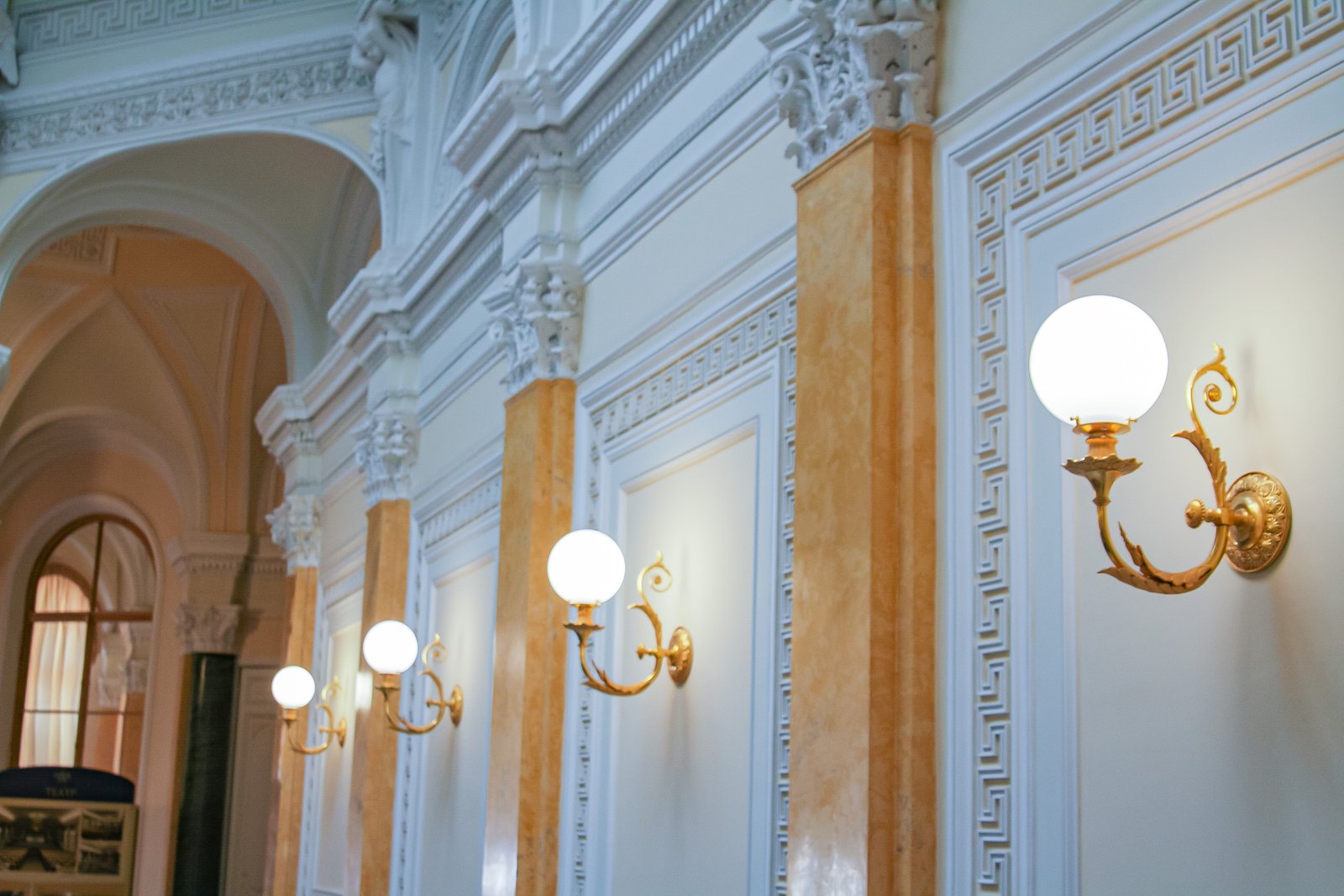

Hello to all my readers. Today I will continue my voluminous story about my impressions when visiting the Great Gatchina Palace, located in the vicinity of St. Petersburg. Today's theme is the marble grand staircase, which is not immediately available.


ONLINE REFERENCE: The Great Gatchina Palace is the central attraction of the Palace Park in Gatchina, located 45 km from St. Petersburg. Until the middle of the twentieth century, the palace museum was considered the largest among similar cultural and historical sites located in the vicinity of Leningrad. It was often called the "Suburban Hermitage" and even the "Castle of the Russian Hamlet". He experienced greatness, nationalization, destruction, oblivion and waited for a real rebirth. Today, the state-scale cultural heritage site, which has become one of the symbols of Gatchina, is included in the UNESCO list as a "monument associated with the historical center of St. Petersburg."


The fact is that now the entrance to the museum is not the main one for tourists. They are allowed into the palace through the courtyard, taking visitors along an inconspicuous route, and only then they are taken upstairs to the main imperial chambers.


While I was walking through the halls of the palace, photographing and memorizing what the guide says, we passed many rooms unnoticed and only about an hour later came to a place that I noticed immediately. It was a staircase leading from the bottom to the top, decorated very richly and beautifully.

Our guide only told us a little about this place, but my daughter and I stayed late and I took all these pictures to show you this corner of the palace in as much detail as possible.

Later I read the following about this staircase: This staircase was the main one from the exit from the palace to the Arsenal Square. It was not built immediately when the main premises were being built, and later, under Emperor Nicholas I.

The author of the marble staircase project is architect R.I. Kuzmin, under whose leadership it was built in the 1840s and 1850s. The famous Krara marble served as the material for finishing the walls, ceilings and the staircase itself.

The natural lighting of the flight of stairs, which comes from a glass ceiling lamp, is interesting. For some reason, I felt incredible comfort and a dense historical atmosphere here. I didn't even want to leave here for a long time.

It is also known that during the Great Patriotic War the staircase was severely damaged, but through the efforts of skilled restorers everything was restored here and today we can see all this beauty.

Tomorrow I will continue my story about the Gatchina Palace and its sights. There are a lot of interesting things ahead of us. And that's it for today!

Привет всем моим читателям. Сегодня я продолжу свой объёмный рассказ о своих впечатлениях при посещении Большого Гатчинского дворца, расположенного в окрестностях Петербурга. Сегодняшняя тема – мраморная парадная лестница, которую не сразу можно найти.

СПРАВКА ИЗ СЕТИ: Большой Гатчинский дворец является центральной достопримечательностью Дворцового парка в Гатчине, расположенного в 45 км от Санкт-Петербурга. До середины ХХ столетия дворец-музей считался крупнейшим среди аналогичных культурно-исторических объектов, находящихся в окрестностях Ленинграда. Его нередко называли «Пригородным Эрмитажем» и даже «Замком русского Гамлета». Он пережил величие, национализацию, разрушение, забвение и дождался настоящего возрождения. Сегодня объект культурного наследия государственного масштаба, ставший одним из символов Гатчины, включен в список Юнеско как «памятник, связанный с историческим центром Санкт-Петербурга».


Дело в том ,что сейчас вход в музей для туристов не является основным. Во дворец пускают через внутренний двор, проводя посетителей неприметным маршрутом, и лишь потом выводят их наверх, в основные импреторские покои.

Пока я прогуливался по залам дворца, фотографируя и запоминая то, что говорит гид, мы незаметно прошли множество комнат и лишь примерно через час вышли к месту, которое я приметил сразу. Это была лестница, ведущая снизу наверх, отделанная очень богато и красиво.


Наша гид лишь немного рассказала об этом месте, но мы с дочкой задержались и я сделал все эти снимки, чтобы показать вам данный уголок дворца как можно подробнее.

Позже я вычитал об этой лестнице следующее: Эта лестница была основной от выхода из дворца в Арсенальное каре. Построена она была не сразу, когда возводились основные помещения, а позже, при императоре Николае I.

Автором проекта мраморной лестницы является архитектор Р.И. Кузьмин, под руководством которого и построили её в 1840-1850-е годаы. Материалом для отделки стен, потолков и самой лестницы послужил знаменитый крарский мрамор.

Интересным представляется естественное освещение пролёта лестницы, котрое поступает из стеклянного плафона на потолке. Здесь я почему-то ощутел невероятный уют и густую историческую атмосферу. Мне даже долго не хотелось уходить отсюда.


Ещё известно, что во время Великой Отечественной войны лестница сильно пострадала, однако усилиями умелых реставраторов здесь всё было восстановлено и сегодня мы с вами можем видеть всю эту красоту.

Завтра я продолжу свой рассказ о Гатчинском дворце и его достопримечательностях. Впереди нас ожидает очень много всего интересного. А на сегодня у меня всё!


